13 Heat-Tolerant Flowers Perfect for Sunny Spots
Gardens filled with bright sunlight can be challenging, but many flowers are well-suited to thrive in those conditions. These blooms love the heat and reward you with vibrant colors that last through the hottest days of summer. From bold petals to long-lasting blossoms, they bring energy and life to garden beds, borders, and containers. Choosing flowers that naturally tolerate direct sun makes it easier to enjoy a thriving outdoor space without constant worry.
This post may contain affiliate links, which helps keep this content free. Please read our disclosure for more info.
Marigolds
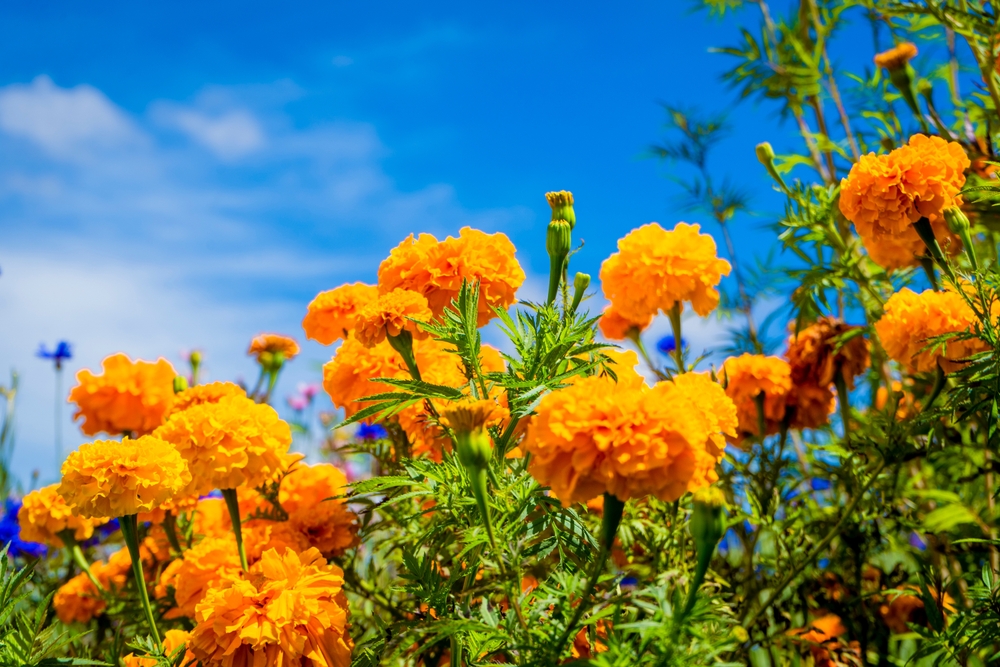
Marigolds are one of the most dependable flowers for hot, sunny gardens. Their ability to tolerate high temperatures and poor soil conditions makes them a favorite among gardeners who need color in challenging spots. The blooms appear in bold shades of yellow, orange, and red, which stand out against the green foliage. These flowers bloom steadily throughout the hottest summer months with very little care.
Beyond their beauty, marigolds are also known for their pest-repelling properties. Many gardeners plant them alongside vegetables to naturally keep harmful insects away. With regular deadheading, marigolds continue to produce flowers, ensuring that garden beds remain full of color until the season ends. Their durability makes them a must-have for anyone looking for easy, heat-loving plants.
Zinnias
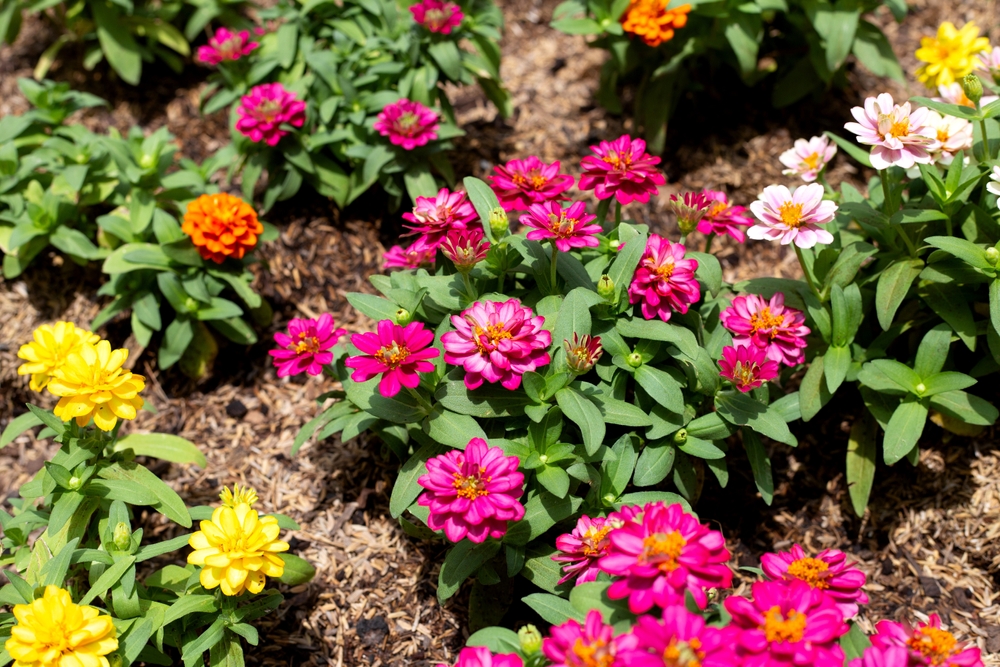
Zinnias flourish in direct sunlight and are known for their impressive tolerance to heat. They provide an array of colors, including pink, red, orange, and purple, which makes them a versatile option for any garden design. Zinnias grow quickly, and once they start blooming, they produce flowers nonstop throughout the summer season. Even during long, dry periods, they continue to brighten up borders and containers.
Another benefit of zinnias is their ability to attract pollinators such as butterflies and bees. This makes them a valuable addition to a garden that also supports fruits and vegetables. Zinnias are also popular as cut flowers since they hold up well in vases and add lasting color indoors. They are easy to grow from seed, making them an accessible choice for beginners.
Lantanas
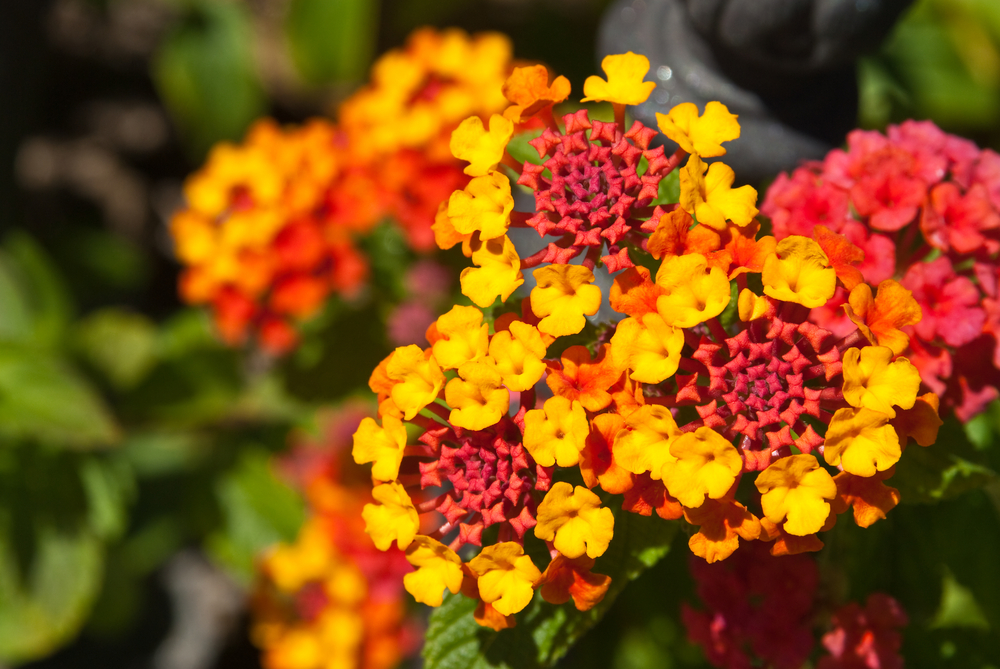
Lantanas are shrubs that thrive in both high heat and drought, making them perfect for sunny gardens. Their clusters of small flowers can change color as they age, creating a mix of pink, orange, red, or yellow on the same plant. They are especially popular in tropical and subtropical regions where intense sunlight is common. Once established, lantanas require very little care to keep blooming.
In addition to their heat tolerance, lantanas are magnets for butterflies and hummingbirds. Their long flowering season means they provide continuous color from spring until the first frost. They are well-suited for garden beds, hanging baskets, and large containers, making them a versatile choice. Because they handle harsh conditions so well, they are often planted in areas with poor soil or along walkways that receive strong sun all day.
Petunias
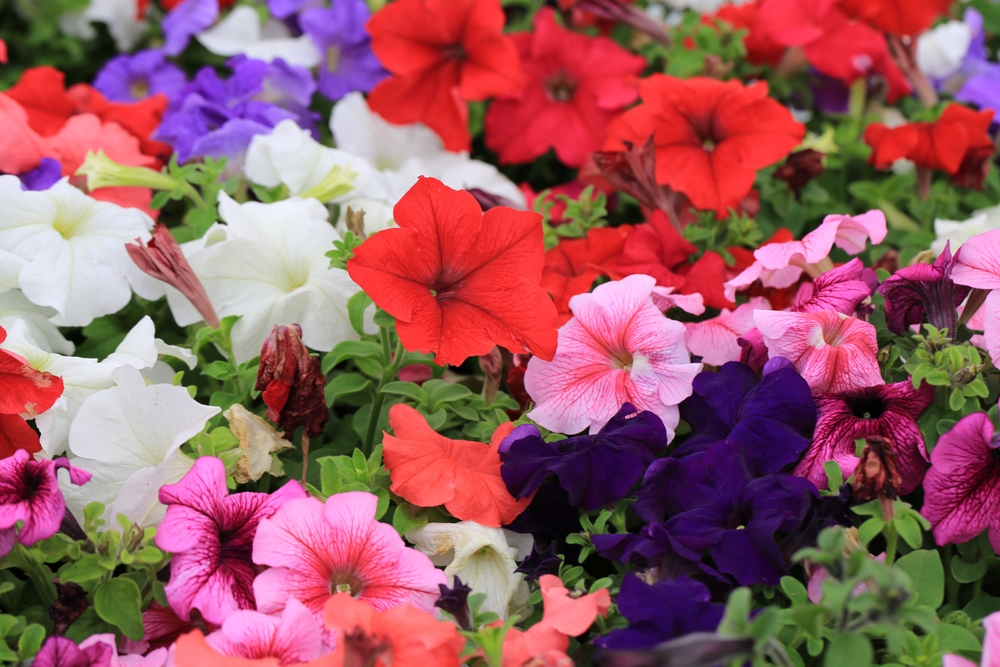
Petunias are widely loved for their ability to handle hot weather while producing large, colorful blooms. They come in nearly every shade, from solid colors to stripes and patterns, giving gardeners endless options. Petunias do especially well in hanging baskets, window boxes, and sunny garden beds. Their long trailing habit makes them ideal for adding texture and fullness.
Regular watering and occasional trimming encourage petunias to bloom consistently throughout the summer. They are particularly effective at filling large spaces with color because of their fast growth. Even under intense sunlight, petunias hold their shape and continue to produce flowers. Their popularity comes from the balance of showy flowers and dependable performance in the heat.
Coneflowers (Echinacea)
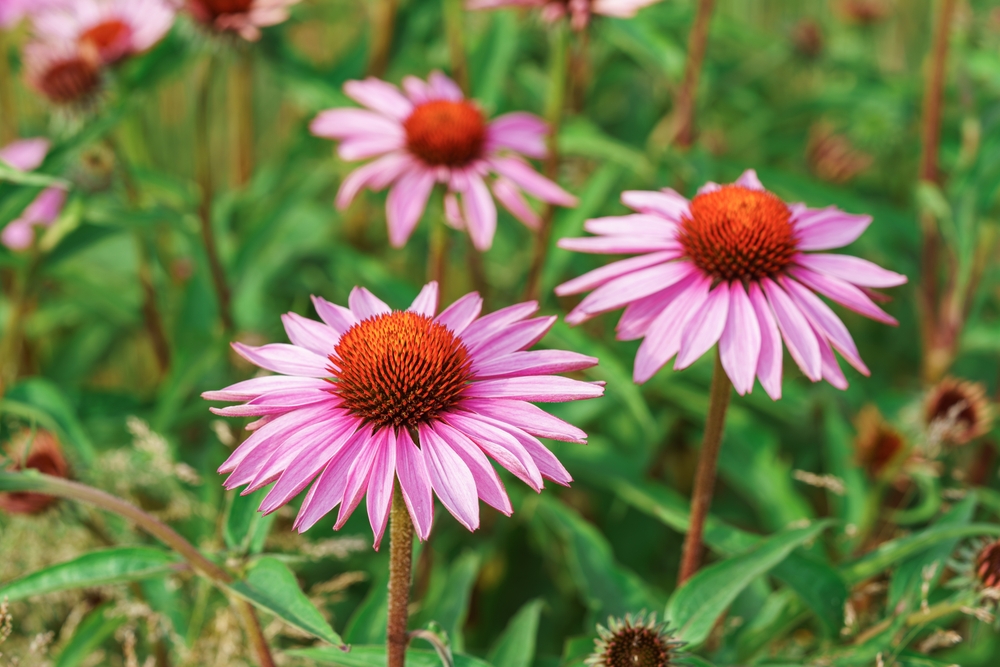
Coneflowers are hardy perennials that thrive in sunny gardens where heat and drought can be a challenge. Their daisy-like petals surround raised centers, often in shades of purple, pink, and white. These flowers are well-loved for their ability to bloom from midsummer to fall with little attention. They are also tolerant of poor soil conditions.
Beyond their resilience, coneflowers attract bees, butterflies, and birds, making them an important pollinator-friendly plant. Once established, they require very little watering, even during the hottest stretches of the season. Coneflowers are also prized for their long-lasting cut flowers, which add beauty indoors. Their combination of durability and vibrant color makes them a staple in sunny landscapes.
Black-Eyed Susans
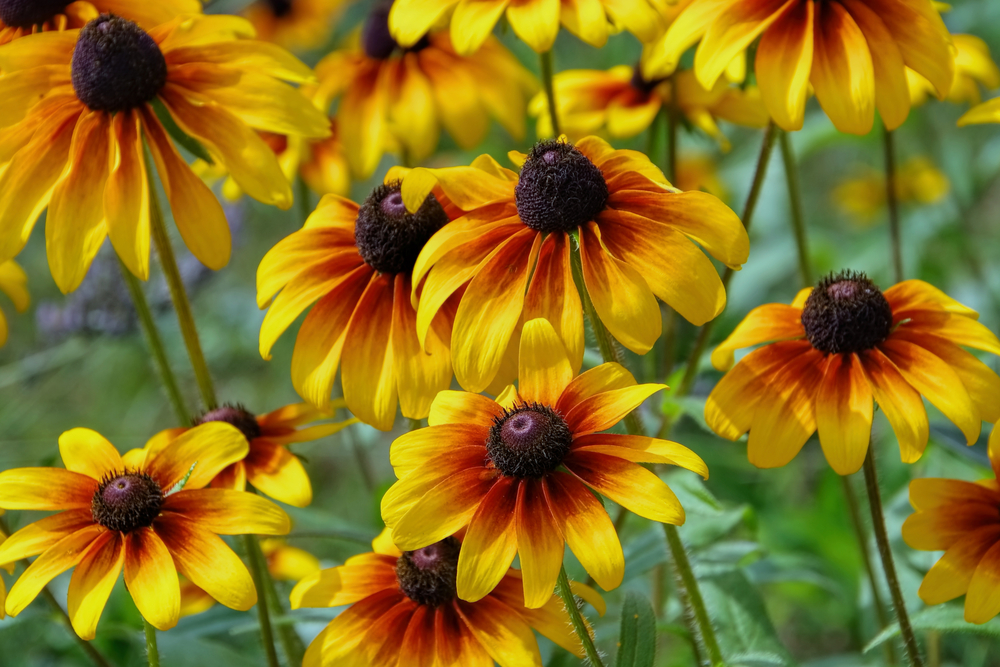
Black-eyed Susans are tough, sun-loving perennials that handle heat with ease. Their bright yellow petals with dark centers bring cheer to any garden. They bloom in midsummer and continue into fall, even when temperatures remain high. Their ability to tolerate drought makes them well-suited for low-maintenance areas.
These flowers are particularly effective in meadow-style gardens or mass plantings where they create a sea of golden color. They attract butterflies and bees while also providing seeds for birds later in the season. Black-eyed Susans require little care beyond occasional deadheading. Their ability to thrive in sunny, hot conditions makes them one of the most reliable flowers for summer gardens.
Geraniums

Geraniums are known for their clusters of colorful blooms and their resilience in hot, sunny conditions. They come in shades of pink, red, and white, making them versatile for both borders and containers. Geraniums continue to flower well into late summer when other plants begin to fade. Their compact size also makes them excellent for balconies and patios.
These flowers are low-maintenance, requiring only occasional watering once established. Gardeners often use them to brighten entryways and sunny spots where consistent blooms are needed. Their strong stems and tolerance of heat make them dependable throughout the warm season. With proper care, geraniums remain vibrant even in intense sunlight.
Portulaca (Moss Rose)

Portulaca is a succulent-like plant that thrives in hot, dry gardens. Its small, rose-like blooms come in vivid colors such as pink, yellow, and red. Moss rose spreads quickly, making it a great choice for ground cover or filling empty spaces in flower beds. Its drought tolerance makes it ideal for sandy or poor soils.
Because of its thick, fleshy leaves, portulaca retains water and withstands extreme heat. The flowers open during the day in full sun, creating a striking display of color. They are also perfect for rock gardens, containers, and hanging baskets. Portulaca is one of the easiest plants to grow in areas where heat would overwhelm more delicate flowers.
Salvia
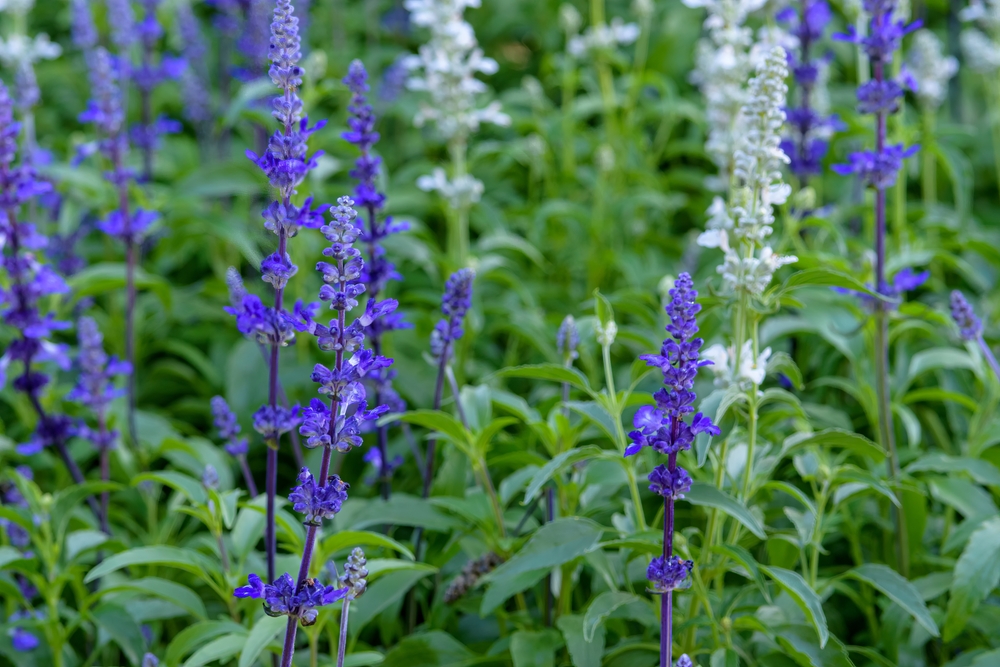
Salvia is a sun-loving plant that produces tall spikes of flowers in shades of purple, red, and blue. It thrives in hot conditions and is highly drought-tolerant once established. The vertical flower spikes add height and structure to garden beds, making them a popular choice for mixed plantings. Salvia blooms steadily throughout summer, even under strong sun.
In addition to their beauty, salvias are excellent for attracting hummingbirds, butterflies, and bees. They require very little care beyond occasional pruning to encourage fresh growth. Their heat tolerance makes them a dependable plant for sunny landscapes. Whether grown as annuals or perennials, salvias provide lasting color throughout the hottest months.
Blanket Flowers (Gaillardia)
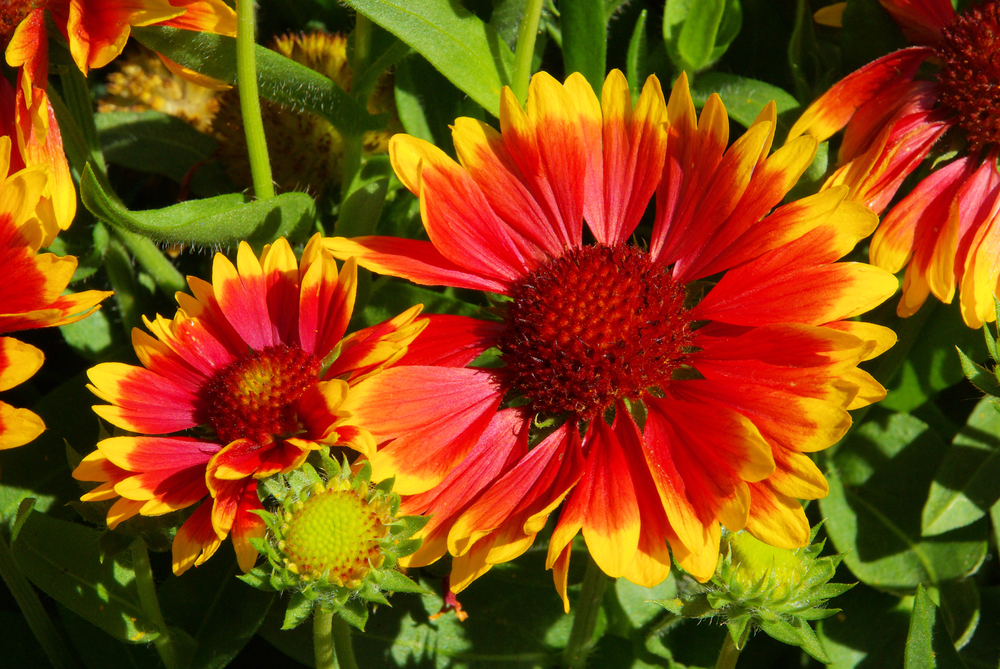
Blanket flowers are known for their ability to flourish in hot, sunny areas with little care. Their blooms feature fiery shades of red, yellow, and orange, which resemble a summer sunset. They tolerate poor soils and dry conditions, making them excellent for tough garden spots. Their extended blooming season ensures color well into late summer.
These flowers are especially effective in borders, wildflower gardens, and low-maintenance landscapes. They attract butterflies and bees, adding more life to the garden. Once established, blanket flowers rarely need extra watering. Their bright, cheerful appearance and durability make them a popular choice for heat-prone regions.
Hibiscus
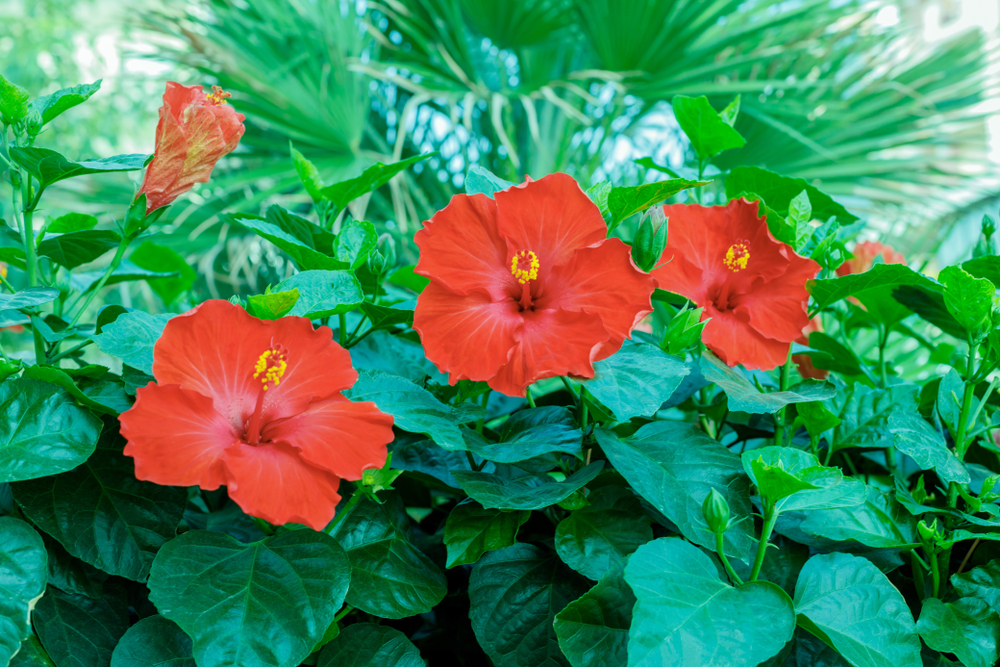
Hibiscus thrives in warm climates and produces large, striking blooms in red, pink, orange, and yellow. These tropical-looking flowers love full sun and flourish in hot weather. They do best in well-drained soil with regular watering during their growing season. Hibiscus plants are often used to create a bold focal point in sunny gardens.
Their oversized blooms attract hummingbirds and butterflies, making them a lively addition to outdoor spaces. Hibiscus plants can be grown in the ground or in containers, which allows flexibility for patios and porches. With consistent care, they produce an abundance of flowers during the hottest months of the year. Their showy presence makes them ideal for creating a tropical feel in any garden.
Sunflowers
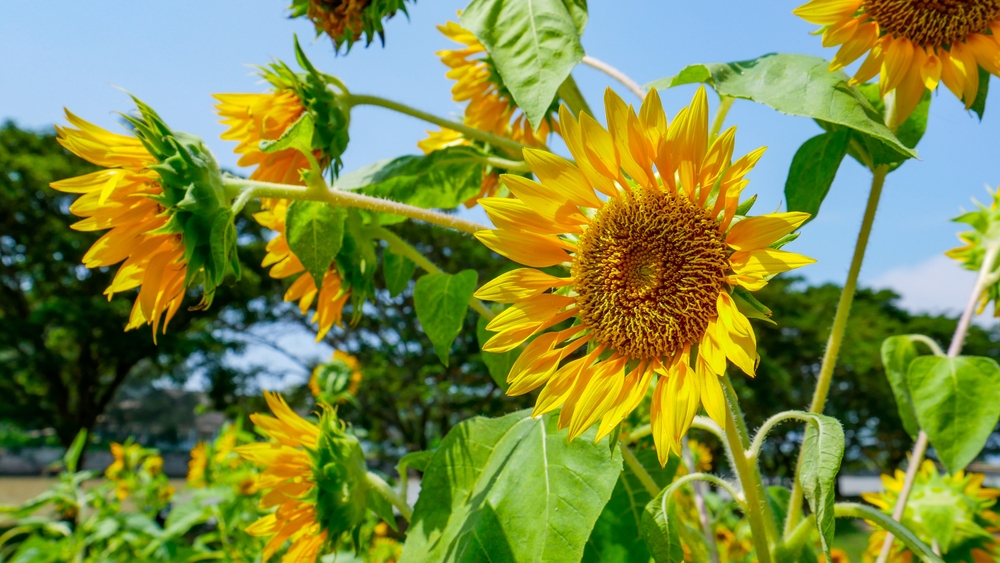
Sunflowers are one of the most iconic heat-loving flowers, known for their towering stalks and large golden blooms. They thrive in direct sunlight and can withstand long stretches of hot weather. Sunflowers grow quickly and produce seeds that feed both people and wildlife. They are often planted in rows or clusters to create a striking garden display.
Their ability to turn and follow the sun throughout the day makes them a unique addition to the garden. Sunflowers are also valuable for pollinators like bees, which rely on their nectar. Once the blooms fade, the seed heads can be harvested or left for birds to enjoy. Their combination of size, durability, and beauty makes them a summer favorite.
Vinca (Periwinkle)
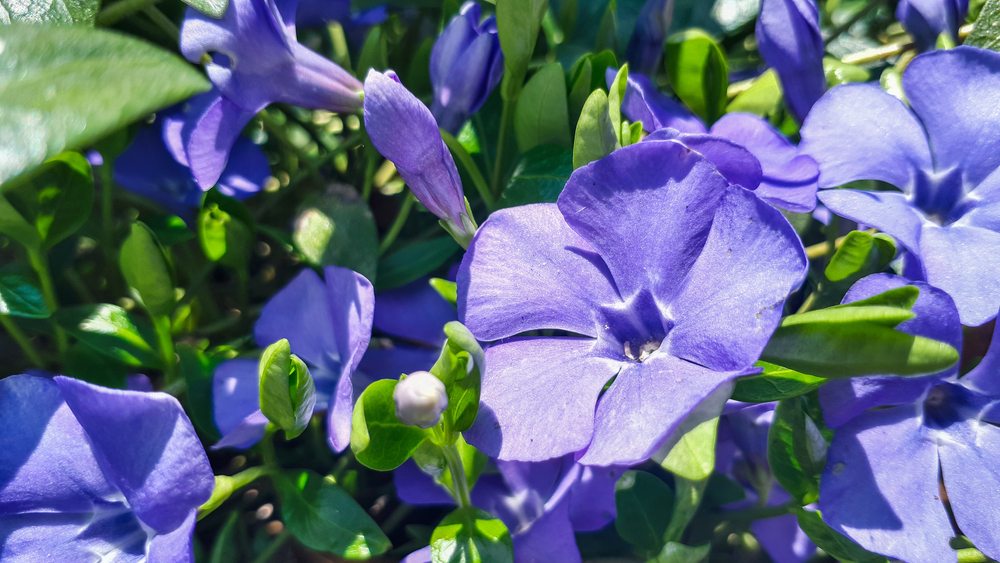
Vinca is a tough, low-maintenance flower that thrives in the hottest and driest parts of the garden. It produces blooms in pink, purple, red, and white, which remain vibrant even under intense sunlight. Vinca is highly resistant to disease and pests, making it an easy-care choice for busy gardeners. Its glossy green leaves stay fresh even when temperatures climb.
This plant is well-suited for borders, containers, and ground cover, where it spreads quickly. Unlike many flowers, vinca performs well without frequent watering. It continues to bloom steadily from late spring through fall. Its resilience and colorful display make it one of the most reliable flowers for sunny gardens.
This article originally appeared on Avocadu.
